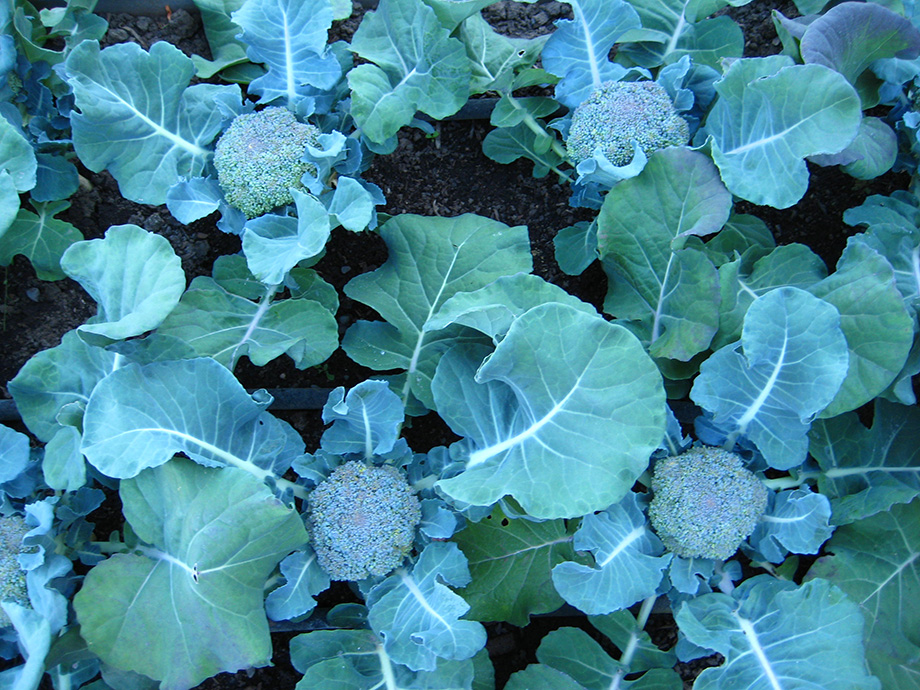Feb. 21 Column: Vegetable Varieties

Well, today’s an exciting day: my first column of the 2016 garden season runs in The Spokesman-Review! Here is a link to it online: Getting grounded. (You can also read my column below.) I know you like to be on top of the latest garden news, right? The topic is cool and exciting new vegetable varieties. I only had room to profile 16 of them for the newspaper. Fortunately, I’ve also created a slideshow of many more.
Column:
by Susan Mulvihill
There is no greater optimism than that of a gardener in late winter. Even on the coldest and gloomiest of days, we firmly believe plants will sprout and flowers will brighten our world.
It’s time to start gearing up for gardening. Beginning today, and on every Sunday throughout the growing season, I’ll guide you through the joys of gardening. I will also share the newest plant varieties and trends and alert you to upcoming events. You’ll even get to read about fellow gardeners who do great things in the neighborhoods around us.
I have a column index on this website. Here’s a link to it.
Winter is a great time to pore over the seed catalogs and dream big. Let’s take a look at some of the promising new vegetable varieties available this year.
Vegetable varieties of note
Bean _ French Mascotte is a bush bean ideal for growing in containers. Since the pods develop at the tops of the plants, they should be easy to pick. It’s available at Renee’s Garden Seeds. A new pole bean, Marconi a Grano Bianco, has flat green pods that can be picked either fresh or as shelling beans. Baker Creek Heirloom Seeds is the source.
Beet _ For the gardener who wants to grow all kinds of beets, Five Color Rainbow is an attractive collection of five different varieties. These include golden, striped and white beets; find them at Renee’s Garden Seeds.
Broccoli _ The earlier and more cold-tolerant Batavia sports large heads. Santee is a burgundy sprouting broccoli that would look pretty both in the garden and on your plate. Source: Natural Gardening Company.
Corn _ Despite its name, Espresso has white and yellow kernels. It’s prized for its ability to germinate in cold soils, vigor and large ears. Source: Territorial Seed.
Cucumber _ Painted Serpent is a long, striped Armenian cucumber with tender skin and sweet flesh. Source: Seeds of Change.
Lettuce _ I like Romaine lettuce for its slightly crunchy leaves and greater tolerance to heat. Three Romaine Mix features green, red and speckled-leaved varieties. Source: Natural Gardening Company. For a tender Bibb lettuce that’s also heat-tolerant, try Matilda from Renee’s Garden Seeds.
Pea _ Spring Blush Tendril Pea features pods with a purple blush. It has bi-colored flowers and a wealth of delicious, edible tendrils. Source: Baker Creek Heirloom Seeds.
Pepper _ Billed as a heatless pepper, Zavory is a flavorful Habanero pepper. It’s ideal for those of us who don’t like too much spice. Source: Territorial Seed.
Spinach _ Escalade should be well-suited for our toasty summers. That’s because of its ability to tolerate warm temperatures without bolting. Source: High Mowing Seeds.
Squash, summer _ I’m on a quest to find the most tender, flavorful zucchini and Clarimore just might be the one. Renee’s Garden Seeds describes it as having “a unique creamy, succulent texture and a delicious nutty sweet flavor.”
Squash, winter _ Delicata squash usually grow on vines but Bush Delicata is a space-saver. The catalog says “nutty flesh with hints of butter and brown sugar.” (how do they do that?) Source: High Mowing Seeds.
Tomato _ Little Napoli’s dainty height of 12 to 18 inches is ideal for container-growin. It’s especially notable as a Roma-type that will mature in 60 to 65 days. Source: Territorial Seed.
Watermelon _ With the longer summers we’ve been experiencing, it’s tempting to try Janosik. It is a yellow-fleshed watermelon that will ripen in 80 days. The fruits average 10 pounds. Source: Baker Creek.
I’ve also included a list of what I’m growing this year. Sources for those seeds are listed on my new website, www.susansinthegarden.com, along with a slideshow of the new varieties above.
Susan Mulvihill is co-author, with Pat Munts, of “Northwest Gardener’s Handbook.” Contact her at Susan@susansinthegarden.com.
2016 Mulvihill Garden with vegetable varieties
Artichoke – Imperial Star, Green Globe
Arugula – Sylvetta
Basil – Large Leaf, Lime
Bean, bush – French Filet
Bean, pole – Italian Snap
Beets – Cylindra
Broccoli – Aspabroc Baby Broccoli hybrid
Cabbage – Golden Acre, Savory Perfection
Carrot – Red Core Chantenay, Starica
Celery – Tango
Claytonia *
Corn salad (Mache) *
Corn, sweet – Luscious
Cucumber – Straight 8
Eggplant – Meatball hybrid
Kale – Lacinato, Vates *
Leek – King Richard
Lettuce – Mascara Red Oakleaf, Red Romaine
Melon – Arava, Napoli
Minutina *
Mizuna – Red
Onion – Copra, Yellow Spanish
Parsnip – Hollow Crown
Peas – Sugar Magnolia, Laxton’s Progress
Pepper – Marconi Rosso, Zavory
Pumpkin – Spookie Deep Sugar
Spinach – Escalade, Bordeaux *
Squash, summer – Trombetta di Albenga, Clarimore
Squash, winter – Lofthouse Landrace Moschata (butternut), Blue Ballet, Sweet Meat Oregon Homestead
Swiss chard – Ruby Red
Tomato – Italian Pompeii, Amish Paste – Kapuler, Indigo Rose
* – winter crop
Online seed sources
In addition to the following online sources, remember to check the seed selections at local garden centers.
- Baker Creek Heirloom Seeds, rareseeds.com
- Burpee, burpee.com
- High Mowing Seeds, highmowingseeds.com
- Natural Gardening Company, naturalgardening.com
- Seeds of Change, seedsofchange.com
- Renee’s Garden, reneesgarden.com
- Territorial Seed, territorialseed.com

